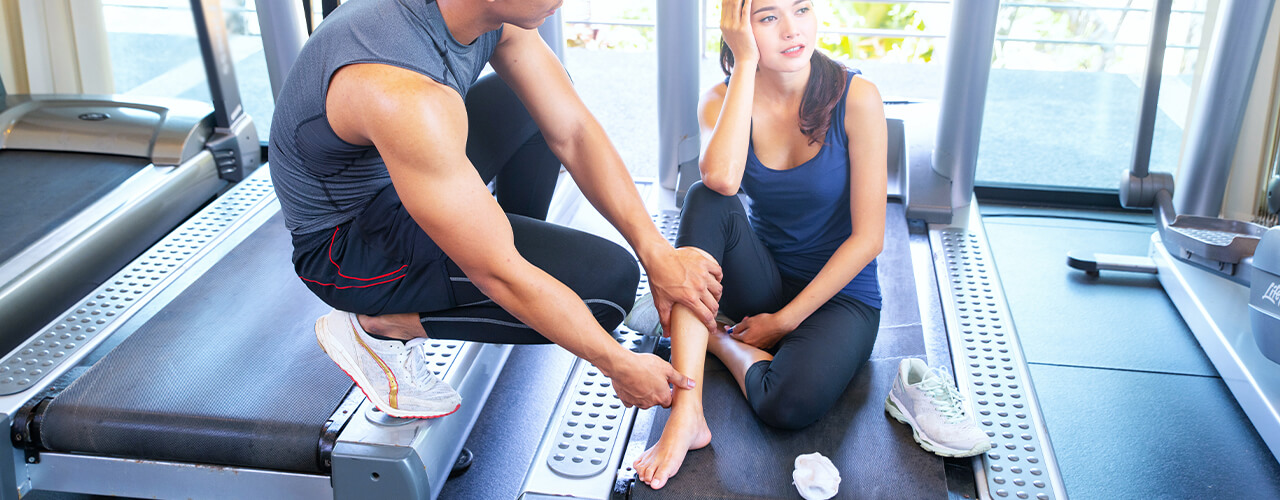What Exercises Does a Physical Therapist Use to Treat Low Back Pain?
Most physical therapy programs designed to treat low back pain and some radicular pain (leg-radiation pain) will include a combination of the following types of exercise:
- Stretching. Proper stretching of muscles along with active exercise will help to maintain a normal range of motion and provide relief for muscles often suffering from disuse of atrophy (shrink muscles due to lack of use) or spasm due to improper posture or nervous irritation. It is best for many patients to follow a stretching routine that has been individually designed for them by a physical therapist or a spine physician. In general, patients with low back pain should focus on stretching the lower back muscles, abdominal muscles, hips, and legs. The patient should never rebound during stretching, and all stretches should be slow and gradual.
- Core reinforcement exercises. These are specific exercises to strengthen the abdominal muscles and the lower back muscles (erector spinae) to provide a ‘belt of muscle’ around the spine.
- Dynamic stabilizing exercises. These exercises involve the use of a variety of exercises and may involve the use of exercise balls, balancing machines or specific stabilizing exercises. The purpose of dynamic stabilization exercise is to strengthen the secondary muscles of the spine and help support the spine through different ranges of motion.
Here are some exercises that your physical therapist might suggest you use. Make sure you follow their instructions – they’re just summaries.
- Cat and cow pose – Lie down on all fours and keep your back straight. Then, bend your spine outwards and upwards towards the ceiling. Hold this pose until you feel a stretch in your neck, then bend your back in and out until you feel a stretch in your lower back. Repeat about ten times.
- Prone leg lifts – This is similar to the Cobra stretch, except that instead of lifting your upper body, you keep it firmly down. Keep your legs stretched out and close together, raise them in one continuous motion as much as you can, hold your pose, and lower your legs back to the ground.
- Leg Stretches – Lie down on your back with your knees raised upward and your feet flat on the ground. Lift up your right foot, loop a band or towel around it, and gently pull your foot towards your chest, keeping your right leg straight and bent until you feel a stretch in your hamstrings.
- Bridges – Bridges are extremely helpful if you’re going to strengthen your lower back. To perform the bridge correctly, lie down on your back and rest your outstretched arms on your side. Lift your hips off the floor, keeping your body straight from the head to the knees. Hold up and down.
- Cobra Stretch – Lie in a prone position and hold your hands on either side of your chest. Keep your feet firmly on the floor and press your hands as you push your upper body, from your chest to your head, upward. Hold this pose for a few seconds, then lower yourself gently.
- Bird – Dog Stretch – This exercise focuses on stretching the muscles that are connected to your lower back to relieve stress and pain. Lie on your fours and lift your left leg, stretching it backwards. Simultaneously, stretch your right arm forward in a straight line. Repeat on each side of it.
Child’s Pose – No other exercise opens your lower back like a child’s pose. It’s easy to perform as well; all you need to do is kneel on a mat, sit on your heels, and bend forward with your arms stretched out in front of you. Relax your head on the floor and enjoy the relief that follows.
Are You Looking for a Physical Therapist Near San Jose You Can Trust?
Pace Physical Therapy in San Jose, California specializes in non-surgical neck pain relief and recovery therapies. We pride ourselves on offering the best possible physical therapy available and going above and beyond for our patients. Our highly experienced physical therapist will work with you to improve your function and relieve your pain. We start by assessing the body as a whole. Oftentimes the cause of pain or an injury extends far beyond just the body part or muscle hurting. Without taking a comprehensive look at your entire self, we would be doing you a disservice in fully helping you heal and preventing future limitations. We then move on to fixing your areas of limitation. Not all diagnoses are created equal. One person with neck pain may have completely different limitations than the next person. Your recovery program needs to be specific to what YOUR body needs and not just the typical exercise program that you can find online. Just because your pain decreases or you can walk longer doesn’t mean that it is enough to get you functioning at the level you want to be. While this often signifies the end of care at your typical PT clinic we don’t stop providing guidance until we help you successfully meet every goal you set for yourself with us on day one. Contact us today to schedule your appointment!


